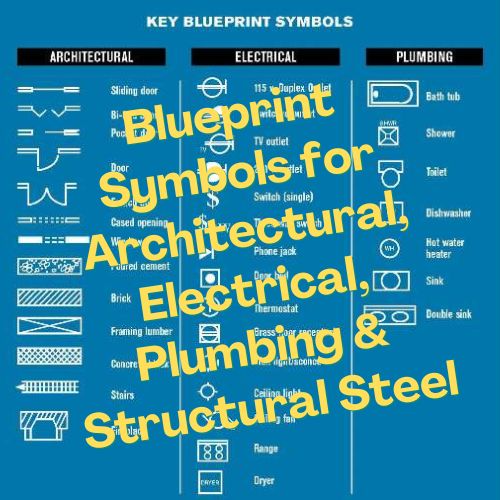Table of Contents
Introduction
Civil engineers play a vital role in building a sustainable future by producing eco-friendly innovations. They design and construct the infrastructure that we rely on every day, from roads and bridges to buildings and water systems. As the world becomes more aware of the need to protect the environment, civil engineers are developing innovative new ways to build infrastructure that is both sustainable and resilient.
Top Eco-friendly Innovations in Civil Engineering for 2023 and 2024
Here are the top 15 eco-friendly innovations in civil engineering for 2023 and 2024:
- Green concrete
- Recycled asphalt pavement (RAP)
- Permeable pavement
- Living roofs
- Green walls
- Rainwater harvesting systems
- Solar-powered roads
- Smart grids
- Energy-efficient buildings
- Sustainable transportation systems
- Waste-to-energy plants
- Desalination plants
- Biodegradable materials
- 3D printing
- Artificial intelligence (AI)
Here we will discuss all these 15 eco-friendly innovations in civil engineering for 2023 and 2024, explained in detail:
1. Green concrete
Green concrete is made with recycled materials and low-carbon binders. Recycled materials can include crushed concrete, recycled glass, and fly ash. Low-carbon binders can include slag cement and geopolymers. It is the most widely used eco-friendly innovations in the field of civil engineering.

Green concrete has a significantly lower environmental impact than traditional concrete. It produces less greenhouse gases and uses less water. Green concrete is also just as strong and durable as traditional concrete.
2. Recycled asphalt pavement (RAP)
RAP is made with recycled asphalt materials. This can include crushed asphalt from old roads and parking lots.
RAP can be used to replace up to 100% of the new asphalt in a pavement mixture. RAP pavements perform just as well as traditional asphalt pavements, and they are often more cost-effective.

Using RAP reduces the amount of asphalt waste that goes to landfills. It also conserves natural resources and reduces energy consumption.
3. Permeable pavement
Permeable pavement allows water to seep through into the ground. This can help to reduce stormwater runoff and improve water quality.

Permeable pavement is made with a variety of materials, such as porous asphalt, concrete, and interlocking pavers. Permeable pavement can be used in a variety of applications, such as sidewalks, driveways, parking lots, and plazas.
Permeable pavement can help to reduce the risk of flooding and improve the health of our waterways. It can also help to reduce the urban heat island effect.
4. Living roofs
Living roofs are rooftops that are covered with vegetation. Living roofs can help to reduce stormwater runoff, improve air quality, and insulate buildings.

Living roofs are made with a variety of materials, such as soil, plants, and drainage systems. Living roofs can be installed on new or existing buildings.
Living roofs can help to reduce the energy consumption of buildings. They can also extend the life of the roof and reduce maintenance costs.
5. Green walls
Green walls are walls that are covered with vegetation. Green walls can help to reduce stormwater runoff, improve air quality, and insulate buildings.
Green walls are made with a variety of materials, such as soil, plants, and drainage systems. Green walls can be installed on new or existing buildings.
Green walls can help to reduce the energy consumption of buildings. They can also improve the indoor air quality and reduce noise pollution.
6. Rainwater harvesting systems
Rainwater harvesting systems collect rainwater from rooftops and other surfaces. The collected rainwater can then be used for irrigation, non-potable water needs, or even drinking water.
Rainwater harvesting systems can help to reduce our reliance on municipal water supplies. They can also help to reduce stormwater runoff and improve water quality.

Rainwater harvesting systems are relatively simple to install and maintain. They can be used in a variety of applications, including residential, commercial, and institutional buildings.
7. Solar-powered roads
Solar-powered roads are covered with solar panels. The solar panels can be used to generate electricity to power streetlights, traffic signals, and other infrastructure.
Solar-powered roads can help to reduce our reliance on fossil fuels. They can also help to reduce greenhouse gas emissions and improve air quality.
Solar-powered roads are still under development, but they have the potential to revolutionize the way we build and maintain our roads.
8. Smart grids
Smart grids are electrical grids that use digital technology to improve the efficiency and reliability of electricity delivery. Smart grids can help to reduce our reliance on fossil fuels and make our electricity grid more resilient to the effects of climate change.

Smart grids use a variety of technologies, such as sensors, smart meters, and communication networks, to collect data on electricity usage and grid conditions. This data is then used to optimize the operation of the grid and improve efficiency.
Smart grids are still under development, but they have the potential to revolutionize the way we generate, deliver, and use electricity.
9. Energy-efficient buildings
Energy-efficient buildings are buildings that are designed to use less energy. This can be achieved through a variety of measures, such as improved insulation, efficient lighting and appliances, and renewable energy systems.
Energy-efficient buildings can help to reduce our reliance on fossil fuels and save money on energy bills. They can also help to reduce greenhouse gas emissions and improve air quality.

There are a variety of ways to make a building more energy-efficient. Some of the most common measures include:
- Improving insulation: This can help to keep the building warm in the winter and cool in the summer, reducing the need for heating and cooling.
- Using energy-efficient windows: Energy-efficient windows can help to reduce heat loss in the winter and heat gain in the summer.
- Installing energy-efficient appliances: Energy-efficient appliances use less energy to operate, which can save money on energy bills.
- Using renewable energy systems: Renewable energy systems, such as solar panels and wind turbines, can generate electricity for the building, reducing its reliance on fossil fuels.
Energy-efficient buildings are a sustainable and cost-effective way to reduce our reliance on fossil fuels and save money on energy bills. They are being used in a variety of projects around the world, including residential, commercial, and institutional buildings.
10. Sustainable transportation systems
Sustainable transportation systems are transportation systems that reduce our reliance on cars and encourage people to walk, bike, and take public transit. It will be a great eco-friendly innovations. Sustainable transportation systems can help to reduce air pollution, traffic congestion, and greenhouse gas emissions.
There are a number of ways to create a more sustainable transportation system. Some of the most common measures include:
- Investing in public transit: Public transit is a more efficient and environmentally friendly way to travel than cars. Investing in public transit can encourage people to use public transit instead of driving.
- Creating bike lanes and pedestrian paths: Bike lanes and pedestrian paths make it safer and more convenient for people to walk and bike.
- Reducing car parking: Reducing the amount of car parking available can discourage people from driving.
- Promoting carpooling and vanpooling: Carpooling and vanpooling can help to reduce the number of cars on the road.
Sustainable transportation systems are a vital part of building a more sustainable future. By reducing our reliance on cars and encouraging people to walk, bike, and take public transit, we can reduce air pollution, traffic congestion, and greenhouse gas emissions.
11. Waste-to-energy plants
Waste-to-energy plants convert waste into electricity or heat. It is another great eco-friendly innovations. Waste-to-energy plants can help to reduce the amount of waste that goes to landfills and generate renewable energy.

Waste-to-energy plants work by incinerating waste to produce heat. The heat can then be used to generate electricity or produce hot water for heating or industrial processes.
Waste-to-energy plants are a controversial technology, but they can be a sustainable way to manage waste and generate renewable energy. Waste-to-energy plants are being used in a variety of projects around the world, including in cities, suburbs, and rural areas.
12. Desalination plants
Desalination plants remove salt from seawater to produce fresh water. Desalination plants can help to provide fresh water in areas where there is a shortage of freshwater resources.
Desalination plants work by using a variety of technologies, such as reverse osmosis and thermal distillation, to remove salt from seawater.
Desalination plants are an energy-intensive technology, but they can be a sustainable way to provide fresh water in areas where there is a shortage of freshwater resources. Desalination plants are being used in a variety of projects around the world, including in the Middle East, North Africa, and Australia.
13. Biodegradable materials
Biodegradable materials are materials that can be broken down by living organisms. Biodegradable materials can be used to make a variety of products, including construction materials, packaging materials, and disposable products.
Biodegradable materials are a more sustainable alternative to traditional materials. Traditional materials, such as plastics and metals, can take hundreds or even thousands of years to decompose.
Biodegradable materials can help to reduce the amount of waste that goes to landfills. They can also help to improve the quality of our soil and water.
14. 3D printing
3D printing is a new technology that is being used to create a variety of products, including construction materials. 3D printing can be used to create custom-shaped building components that are more efficient and less wasteful than traditional construction methods.

3D printing is also being used to develop new types of construction materials, such as self-healing concrete and recycled concrete. Self-healing concrete can repair cracks on its own, and recycled concrete is made with recycled materials, such as crushed concrete and recycled glass.
3D printing is still under development, but it has the potential to revolutionize the way we build infrastructure. 3D printing can help us to reduce waste, create more efficient and sustainable building components, and build new types of infrastructure that are more resilient to the effects of climate change.
15. Artificial intelligence (AI)
Artificial intelligence (AI) is a powerful tool that is transforming civil engineering. AI-powered software and sensors are being used to design more efficient and sustainable infrastructure, monitor and maintain infrastructure in real-time, and develop new ways to build infrastructure that is more resilient to the effects of climate change.
For example, AI-powered traffic management systems can use real-time data to optimize traffic flow and reduce congestion, leading to reduced air pollution and fuel consumption. AI-powered energy management systems can optimize energy consumption in buildings and other infrastructure, leading to reduced energy costs and greenhouse gas emissions. And AI-powered water management systems can optimize water use and reduce waste, leading to increased water conservation and improved water quality.

AI is still in its early stages of development in civil engineering, but it has the potential to revolutionize the way we design, build, and maintain infrastructure. By using AI to create more efficient, sustainable, and resilient infrastructure, we can reduce our environmental impact and build a more sustainable future.
Here are some specific examples of how AI is being used in civil engineering today:
- AI-powered design software: AI-powered software can help engineers to design more efficient and sustainable structures by optimizing parameters such as material use, energy consumption, and environmental impact.
- AI-powered construction monitoring: AI-powered sensors can be used to monitor the condition of construction projects in real-time, identifying potential problems early on and preventing costly delays and repairs.
- AI-powered predictive maintenance: AI-powered systems can be used to predict when and where maintenance is needed on infrastructure, such as roads, bridges, and water systems, helping to extend the lifespan of infrastructure and reduce costs.
Conclusion
The eco-friendly innovations in civil engineering for 2023 and 2024 discussed in this post offer a glimpse into a more sustainable future. By using new materials, technologies, and design principles, civil engineers are working to reduce the environmental impact of infrastructure and create a more resilient world.
These innovations are being used in a wide range of projects, from roads and bridges to buildings and water systems. For example, green concrete is being used to reduce the carbon footprint of construction, while recycled asphalt pavement is being used to reduce the amount of waste that goes to landfills. Permeable pavement and green roofs are being used to reduce stormwater runoff and improve air quality. And AI-powered systems are being used to optimize traffic flow, energy consumption, and water use.
These innovations are still in their early stages of development, but they have the potential to revolutionize the way we design, build, and maintain infrastructure. By using these technologies to create more efficient, sustainable, and resilient infrastructure, we can reduce our environmental impact and build a better future for all.
I hope this article will help you to know about the Top Eco-friendly Innovations in Civil Engineering for 2023 and 2024. You may also want to see my other post on my Blog. If I have missed anything here, please let me know about that in the comment below this post.
Share it with your friends.
Happy Learning.
If you liked this article, then please help me to share this article with your friends through Facebook, Twitter, WhatsApp or Instagram. You can also find us on Facebook, Twitter, Instagram, Telegram Channel, YouTube Channel, and Pinterest. Also, Subscribe to our mailing list to get a new post update from us. And, do me a favour, if you find this post helpful, rate a 5 star below-




